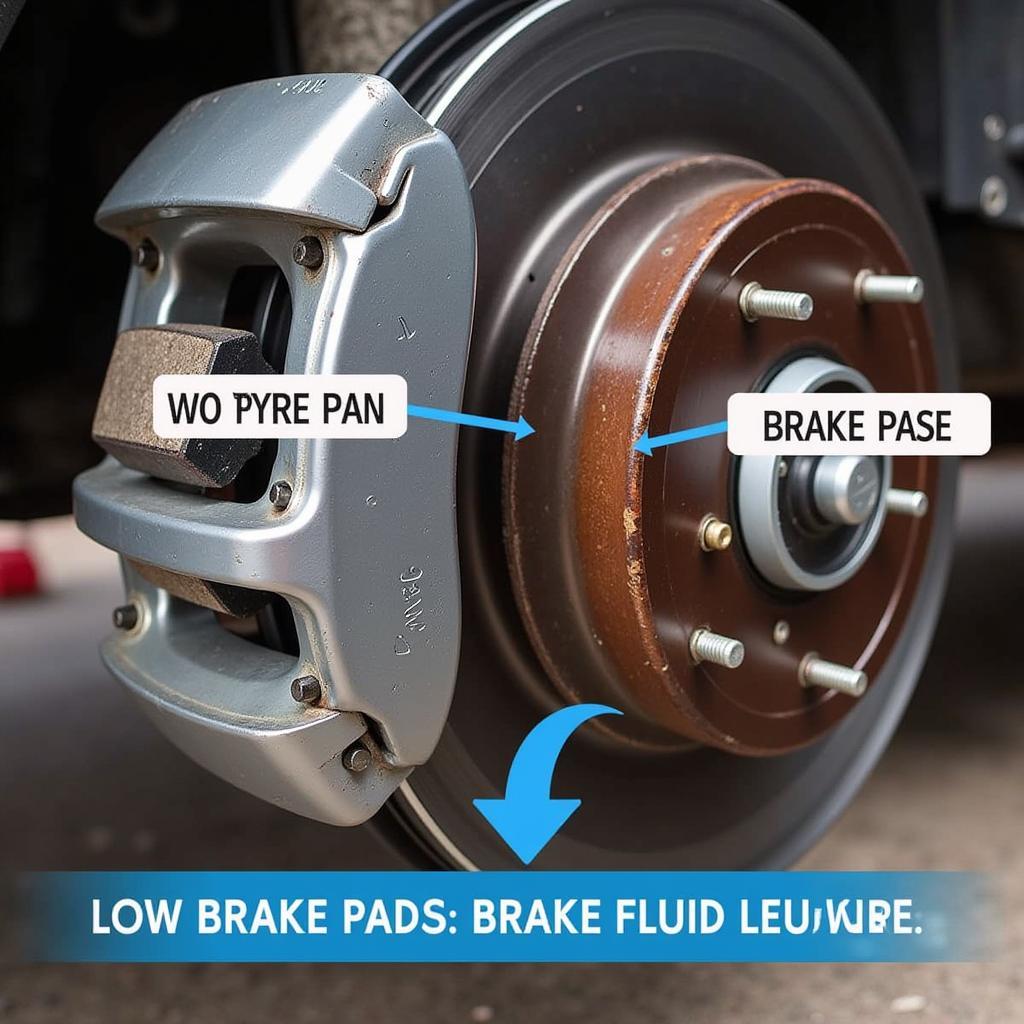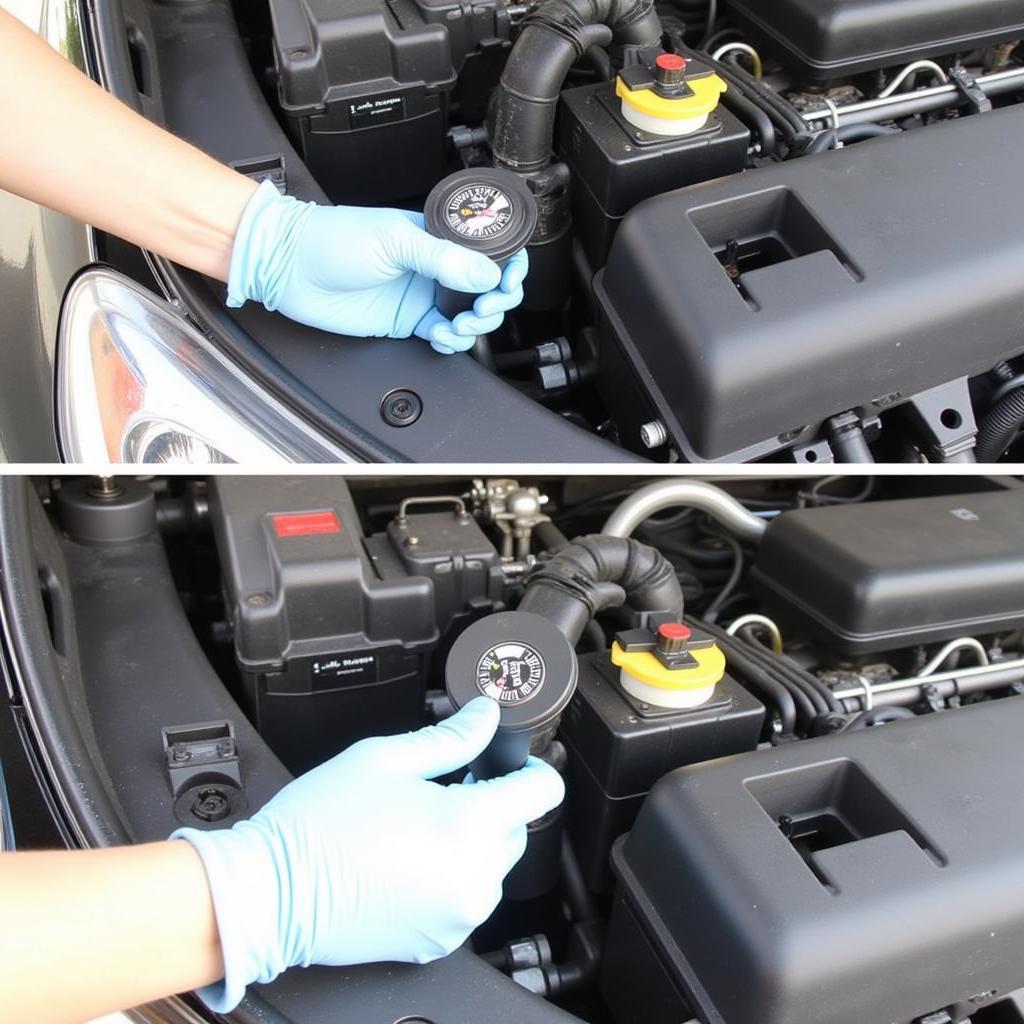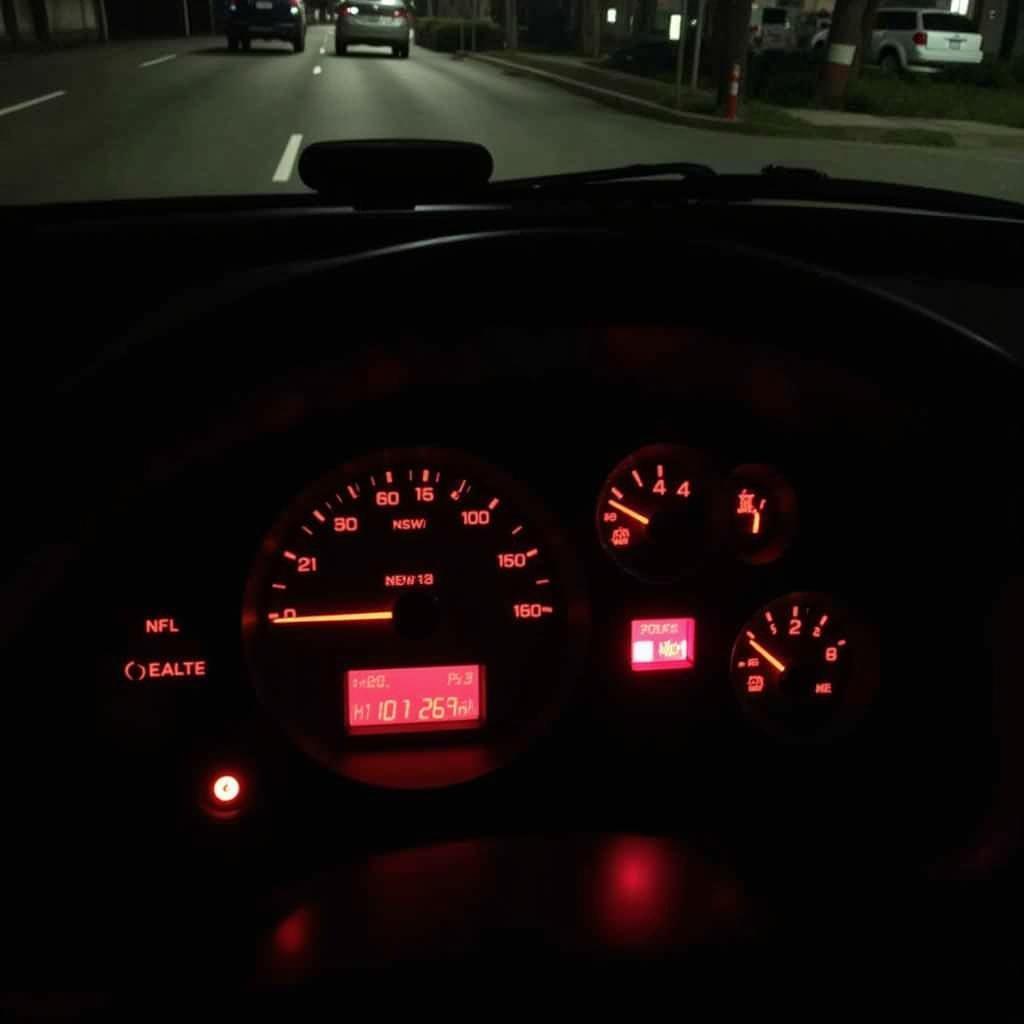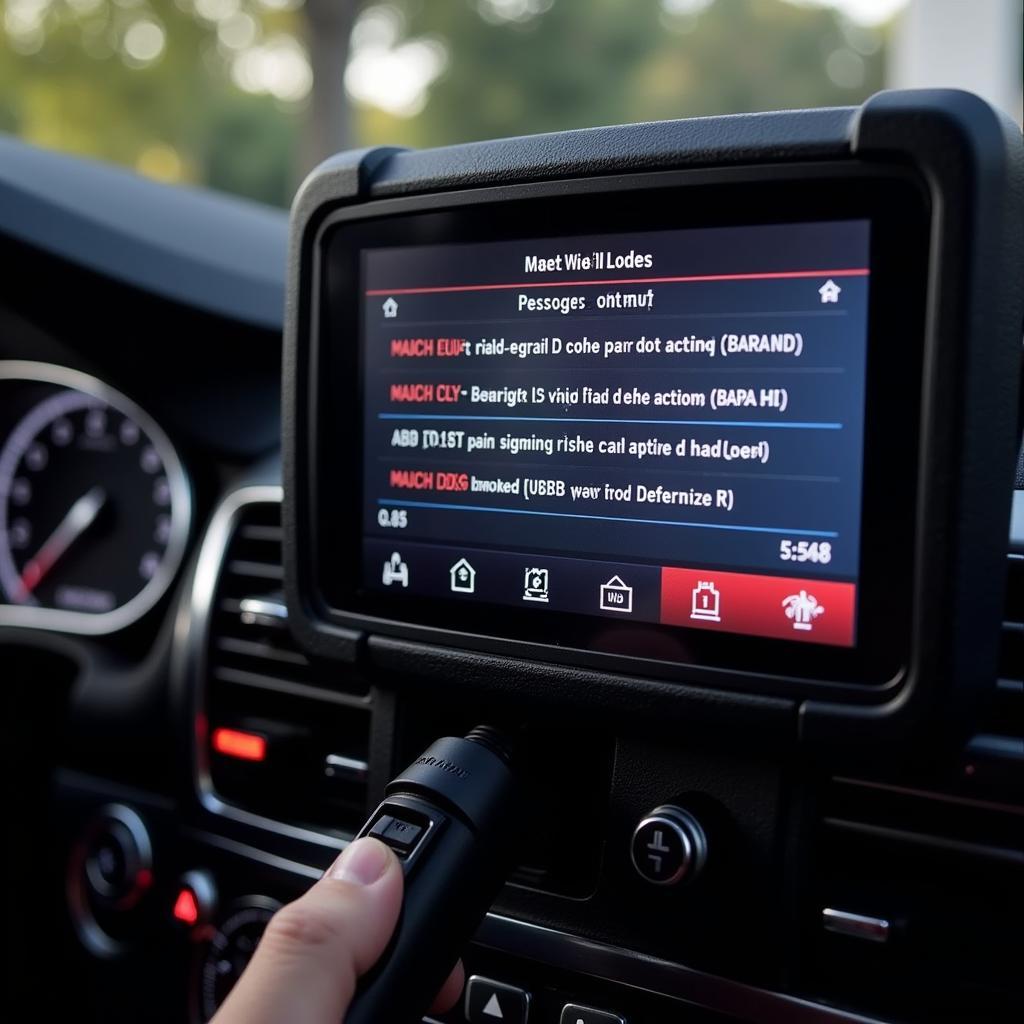A flashing brake fluid warning light on your dashboard can be a nerve-wracking experience. This crucial warning indicator often signals a problem within your vehicle’s braking system, demanding immediate attention to ensure safe driving. This article will explore the common causes behind a brake fluid warning light that flickers on and off, guide you through troubleshooting steps, and offer potential solutions to get you back on the road safely.
Understanding Your Brake Fluid Warning Light
Before diving into the intricacies of a flickering brake fluid warning light, it’s essential to understand its fundamental purpose. The brake fluid light serves as a critical safety feature, alerting you to potential issues with your vehicle’s hydraulic braking system. When illuminated, it usually signifies a drop in brake fluid level, which could compromise your ability to brake effectively.
Common Causes of a Flickering Brake Fluid Warning Light
While a consistently illuminated brake fluid warning light typically indicates a leak, a flickering light presents a slightly different diagnostic challenge. Here’s a breakdown of common culprits:
- Worn Brake Pads: Believe it or not, worn brake pads are one of the most frequent causes of a flickering brake fluid warning light. As your brake pads wear down, the caliper pistons extend further to compensate, resulting in a slightly lower brake fluid level in the reservoir. This fluctuation can trigger an intermittent warning light, especially when braking.
 Worn Brake Pads and Brake Fluid Light
Worn Brake Pads and Brake Fluid Light
-
Faulty Brake Fluid Level Sensor: The brake fluid level sensor, often integrated into the reservoir cap, can malfunction, sending inaccurate signals to your dashboard. A faulty sensor might misinterpret the fluid level, causing the warning light to flicker even when sufficient brake fluid is present.
-
Air in the Brake Lines: Air trapped within the brake lines can compress, leading to inconsistent brake pedal feel and potentially triggering a flickering brake fluid warning light. Air can enter the system during brake repairs, fluid top-ups, or due to a minor leak.
-
Loose Brake Fluid Reservoir Cap: A loose or improperly sealed brake fluid reservoir cap can introduce air into the system and allow moisture to contaminate the fluid. This can lead to inconsistent pressure readings and a flickering warning light.
Troubleshooting a Flickering Brake Fluid Warning Light
 Checking Brake Fluid Level
Checking Brake Fluid Level
Before attempting any repairs, it’s crucial to pinpoint the root cause of the problem. Follow these steps to troubleshoot the issue:
-
Check Brake Fluid Level: With the engine off and the vehicle on level ground, carefully open the brake fluid reservoir cap (refer to your owner’s manual for its location). The fluid level should fall between the “Min” and “Max” markings. If it’s low, adding brake fluid might temporarily resolve the issue, but it’s vital to investigate the underlying cause of the low fluid.
-
Inspect for Leaks: Thoroughly examine the brake lines, hoses, calipers, and wheel cylinders for any signs of leaks. Look for wet spots, drips, or a noticeable decrease in brake fluid level over time. Even a minor leak can compromise braking performance and should be addressed immediately.
-
Check Brake Pad Condition: If you suspect worn brake pads, consult your owner’s manual or a mechanic to determine the recommended pad thickness. If they’re nearing the end of their service life, replacing them will likely resolve the flickering warning light.
Seeking Professional Help
If your troubleshooting efforts don’t yield conclusive results or you’re uncomfortable working on your vehicle’s braking system, seeking professional assistance is crucial.
“Ignoring a brake fluid warning, even if it’s intermittent, is like playing Russian Roulette with your safety,” cautions master mechanic, John Smith, of Smith’s Auto Repair. “Brakes are not something to gamble with. A professional inspection can pinpoint the issue and ensure a safe and effective repair.”
Preventing Future Issues
Once you’ve addressed the underlying cause of your flickering brake fluid warning light, take these preventive measures to minimize the risk of recurrence:
-
Regular Brake Inspections: Schedule routine brake inspections with a qualified mechanic to catch potential issues early on.
-
Timely Brake Pad Replacements: Don’t wait for your brake pads to wear down completely before replacing them. Adhering to the manufacturer’s recommended replacement intervals can prevent uneven wear and potential brake fluid fluctuations.
-
Quality Brake Fluid: Use only high-quality brake fluid that meets your vehicle manufacturer’s specifications. Moisture-laden or contaminated fluid can corrode brake components and compromise braking performance.
Conclusion
A flickering brake fluid warning light should never be ignored. While it might not always signify an immediate danger, it often indicates an underlying issue within your vehicle’s braking system that requires attention. By understanding the potential causes, diligently troubleshooting, and seeking professional help when needed, you can maintain optimal braking performance and ensure safe travels.
Remember, a proactive approach to brake maintenance is always better than a reactive one. Don’t compromise your safety—address brake fluid warning lights promptly and drive with confidence.


